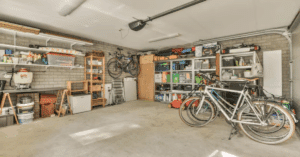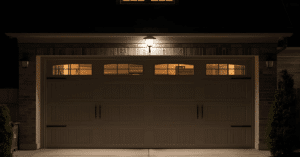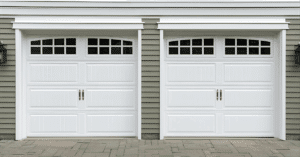Your garage door is one of the most frequently used moving parts in your home, yet it often gets overlooked until something goes wrong. Every day, it opens and closes smoothly—until seasonal changes start affecting its components. That’s why following a Seasonal Garage Door Maintenance Guide is essential for keeping your system reliable, safe, and efficient throughout the year. As temperatures rise, fall, or shift suddenly, your garage door’s springs, rollers, tracks, and opener all experience extra stress. Taking a few minutes each season to inspect, clean, and maintain these parts not only prevents unexpected breakdowns but also helps avoid costly repairs and extends the door’s overall lifespan. With a little routine care, you can ensure your garage door operates at its best in every season.
Why Seasonal Garage Door Maintenance Matters
Temperature shifts, humidity, and weather changes can all impact garage door components. Springs may weaken, metal parts may rust, and tracks may shift out of alignment. By using a Seasonal Garage Door Maintenance Guide, you stay ahead of these issues and keep your door operating smoothly no matter the season.
Seasonal Garage Door Maintenance Guide for Spring
With winter finally over, spring is the perfect time to inspect your garage door and refresh its components.
- Check the Springs and Cables: Cold weather can put stress on garage door springs. Look for gaps, rust, or stretched cables. If anything seems off, call a technician, as these parts are under high tension.
- Clean the Tracks and Rollers: Debris buildup can cause grinding or jerky movements. Clean the tracks with a cloth and remove any dirt from the rollers for smoother, quieter operation.
- Test the Safety Sensors: Spring cleaning should include testing your photo-eye sensors. Make sure they align correctly and respond when something blocks their path.
Maintenance Guide for Summer
Summer heat can cause garage door components to dry out or expand, affecting performance.
- Lubricate Moving Parts: Use a silicone-based lubricant on hinges, springs, and rollers to keep the door moving freely. Avoid grease, as it attracts dust in hot weather.
- Inspect Weatherstripping: Extreme sun exposure can crack or harden the rubber seal. Replacing old weatherstripping helps keep hot air, insects, and dust out of your garage.
- Check the Opener Settings: High temperatures can affect the opener motor. Test the force settings to ensure the door opens and closes without strain.
Maintenance Guide for Fall
Fall is all about preparation. This is the time to make sure your garage door can handle the upcoming winter.
- Tighten Loose Hardware: Temperature changes cause screws, hinges, and brackets to loosen. Tightening them now prevents vibration and misalignment during winter.
- Examine the Door Balance: Disconnect the opener and manually lift the door halfway. If it stays in place, the balance is good. If not, it may require a professional adjustment.
- Clean and Paint the Door: Moisture and falling leaves can lead to rust buildup. A fresh coat of paint or protective seal helps preserve the door’s exterior.
Maintenance Guide for Winter
Winter is the most challenging season for garage doors due to freezing temperatures and moisture.
- Protect the Tracks from Ice: Snow and ice can freeze onto the tracks. Keep the area clear and avoid using hot water, which can refreeze quickly.
- Monitor the Door’s Response Time: If your door hesitates or moves slowly, the cold may be affecting the opener or springs. A quick inspection helps prevent sudden breakdowns.
- Reinforce Insulation: A well-insulated door keeps your garage warm and reduces strain on the opener. Check for drafts and seal gaps before winter peaks.
Extra Tips for Year-Round Maintenance
- Listen for unusual noises such as grinding or squeaking.
- Keep your remote batteries fresh.
- Avoid DIY repairs on high-tension parts like springs.
- Schedule professional maintenance once a year.
Conclusion
Following a Seasonal Garage Door Maintenance Guide ensures your garage door stays safe, functional, and efficient no matter the weather. By giving your door consistent care each season—spring, summer, fall, and winter—you reduce breakdowns, extend its lifespan, and maintain smooth performance year-round. A little seasonal attention goes a long way in protecting one of your home’s most important moving systems.
FAQs
Q: How often should I maintain my garage door?
A: A seasonal approach—four times a year—is ideal for preventing unexpected issues.
Q: Can I lubricate garage door springs myself?
A: You can apply lubricant, but avoid adjusting springs on your own due to high tension.
Q: Why is my garage door louder in winter?
A: Cold weather stiffens metal parts, making the door noisier during operation.
Q: When should I replace weatherstripping?
A: Replace it whenever you notice cracking, tearing, or drafts around the garage door.
Q: Do I need a professional for seasonal maintenance?
A: Basic tasks can be done at home, but a yearly professional inspection is recommended.





